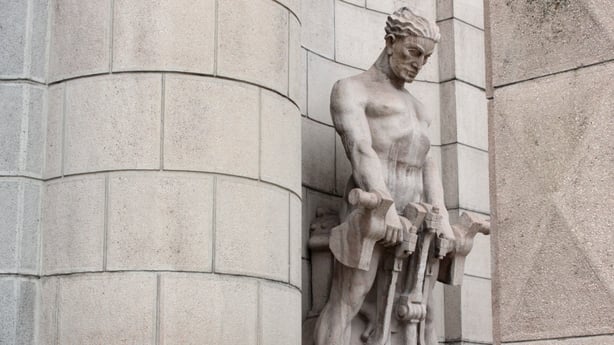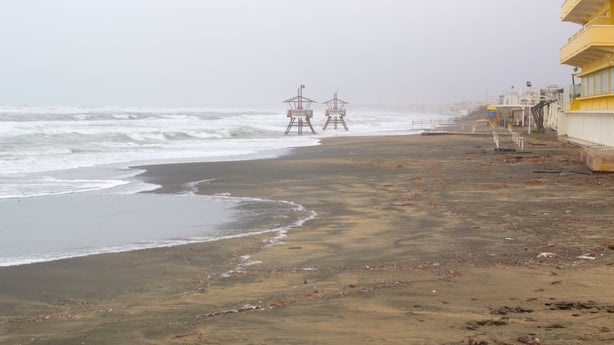Author and filmmaker Adrian Duncan introduces his new film Latina, Latina, a hybrid-documentary shot in Italy that explores political ideology through the objects and buildings left behind. Funded by the Arts Council's Reel Art Award, the film premieres at this month's Dublin Film Festival.
This project began two years ago, when I was standing outside Bolzano train station in northern Italy. I was on my way back to Berlin with my partner and our nervous dog, waiting for the train that runs from Bologna to Munich. It was a cold morning, but I still took a walk around the busy station, taking in its stone façade and the Dolomite mountains, swirled in mist, beyond.
I once worked as an engineer for Irish Rail. It was my first job after graduating from university in 1999. Whenever I travel, I still find myself drawn to the various elements of structure and infrastructure that comprise a rail network. Bolzano station was renovated in 1929 by Angiolo Mazzoni, a Futurist architect who went on to design numerous civic buildings across Italy during Mussolini's reign.

A few months later, having successfully applied to the Arts Council for funding to make a film on this project, I returned to nearby Rovereto to access an archive dedicated to Mazzoni. There, I came across a photograph of Bolzano station from its opening in 1929. Flanking the main entrance are two stone statues: nude male and female figures, perfectly symmetrical, each holding large machine parts. These statues seemed to represent ferocious physical ideals - symbols of the traditional yet militantly productive society Mussolini envisioned.
Over the years, I've found that my projects always begin with an object: a porcelain cup, electricity poles, bungalows, a rick of turf, a Bavarian bridge, or Fascist-era sculptures.
I learned that the renovation of Bolzano station was part of a broader project to modernize several stations leading up to Brennero. After World War I, under the Treaty of Saint Germain, national borders in this region were redrawn, and Italy reclaimed this land. The new Fascist government began imprinting its vision of 'Italian-ness' onto the built environment. Alongside these stations, numerous 'Monuments to Victory' and imposing white 'Buildings of Justice' were constructed. Bolzano’s own Monument to Victory - designed by Marcello Piacentini, a major figure in this new architectural style - stands as an archetype of this approach. Like a giant limbless soldier, it looms sullenly where Bolzano’s new town meets the old.

Over the years, I’ve found that my projects always begin with an object: a porcelain cup, electricity poles, bungalows, a rick of turf, a Bavarian bridge, or Fascist-era sculptures. From there, an analysis unfolds. The ideas that brought these objects into being gradually reveal themselves, and it is this process of revelation that I share with readers of my books or viewers of my films.
My new film, Latina, Latina is another case in point. These objects in northern Italy led me to others from the same period of fascism—from Bolzano to Milan, to EUR, and finally to Latina. Latina is a small planned town on the Mediterranean coast, about an hour south of Rome. Built in the early 1930s on reclaimed land that was once part of the Pontine Marshes, Latina holds its own set of symbolic objects.

While shooting the final part of the film there, I kept encountering the word Bonifica (reclamation) on sculptures. The more I thought about this word, the more I realised how deeply its meanings resonated throughout the buildings and objects I had seen—from Latina all the way back up to Bolzano. It became clear to me that one of Fascism’s tactics was the reclamation of a grand national past, which was then violently projected into an imagined future.
This idea, embedded in these objects, suddenly ceased to feel purely historical. I realised that it has persisted into the present.
Latina, Latina screens at the IFI Dublin on the 25th of February at 6:30pm, as part of DIFF, followed by a Q&A with Ian Maleney - find out more here.

